Inhibition of miR-328-3p Impairs Cancer Stem Cell Function and Prevents Metastasis in Ovarian Cancer
- PMID: 30894370
- PMCID: PMC6777340
- DOI: 10.1158/0008-5472.CAN-18-3668
Inhibition of miR-328-3p Impairs Cancer Stem Cell Function and Prevents Metastasis in Ovarian Cancer
Abstract
Cancer stem cells (CSC) play a central role in cancer metastasis and development of drug resistance. miRNA are important in regulating CSC properties and are considered potential therapeutic targets. Here we report that miR-328-3p (miR-328) is significantly upregulated in ovarian CSC. High expression of miR-328 maintained CSC properties by directly targeting DNA damage binding protein 2, which has been shown previously to inhibit ovarian CSC. Reduced activity of ERK signaling in ovarian CSC, mainly due to a low level of reactive oxygen species, contributed to the enhanced expression of miR-328 and maintenance of CSC. Inhibition of miR-328 in mouse orthotopic ovarian xenografts impeded tumor growth and prevented tumor metastasis. In summary, our findings provide a novel mechanism underlying maintenance of the CSC population in ovarian cancer and suggest that targeted inhibition of miR-328 could be exploited for the eradication of CSC and aversion of tumor metastasis in ovarian cancer. SIGNIFICANCE: These findings present inhibition of miR-328 as a novel strategy for efficient elimination of CSC to prevent tumor metastasis and recurrence in patients with epithelial ovarian cancer.
©2019 American Association for Cancer Research.
Conflict of interest statement
Disclosure of Potential Conflicts of Interest
No potential conflicts of interest were disclosed.
Figures

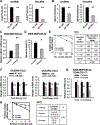
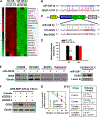
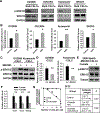
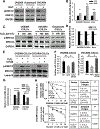
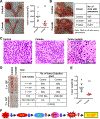
Similar articles
-
Downregulation of MYPT1 increases tumor resistance in ovarian cancer by targeting the Hippo pathway and increasing the stemness.Mol Cancer. 2020 Jan 11;19(1):7. doi: 10.1186/s12943-020-1130-z. Mol Cancer. 2020. PMID: 31926547 Free PMC article.
-
miR-450a Acts as a Tumor Suppressor in Ovarian Cancer by Regulating Energy Metabolism.Cancer Res. 2019 Jul 1;79(13):3294-3305. doi: 10.1158/0008-5472.CAN-19-0490. Epub 2019 May 17. Cancer Res. 2019. PMID: 31101765 Free PMC article.
-
Monospecific antibody targeting of CDH11 inhibits epithelial-to-mesenchymal transition and represses cancer stem cell-like phenotype by up-regulating miR-335 in metastatic breast cancer, in vitro and in vivo.BMC Cancer. 2019 Jun 27;19(1):634. doi: 10.1186/s12885-019-5811-1. BMC Cancer. 2019. PMID: 31248373 Free PMC article.
-
Roles of miRNAs in regulating ovarian cancer stemness.Biochim Biophys Acta Rev Cancer. 2024 Nov;1879(6):189191. doi: 10.1016/j.bbcan.2024.189191. Epub 2024 Sep 29. Biochim Biophys Acta Rev Cancer. 2024. PMID: 39353485 Review.
-
Regulation of ovarian cancer stem cells or tumor-initiating cells.Int J Mol Sci. 2013 Mar 25;14(4):6624-48. doi: 10.3390/ijms14046624. Int J Mol Sci. 2013. PMID: 23528891 Free PMC article. Review.
Cited by
-
MicroRNA-15a-5p inhibits endometrial carcinoma proliferation, invasion and migration via downregulation of VEGFA and inhibition of the Wnt/β-catenin signaling pathway.Oncol Lett. 2021 Apr;21(4):310. doi: 10.3892/ol.2021.12570. Epub 2021 Feb 22. Oncol Lett. 2021. PMID: 33732386 Free PMC article.
-
The Role of microRNAs in Epithelial Ovarian Cancer Metastasis.Int J Mol Sci. 2020 Sep 25;21(19):7093. doi: 10.3390/ijms21197093. Int J Mol Sci. 2020. PMID: 32993038 Free PMC article. Review.
-
Effect of valproic acid on miRNAs affecting histone deacetylase in a model of anaplastic thyroid cancer.Mol Biol Rep. 2021 Aug;48(8):6085-6091. doi: 10.1007/s11033-021-06616-2. Epub 2021 Aug 10. Mol Biol Rep. 2021. PMID: 34374891
-
Lifestyle-Driven Variations in Nutrimiromic MicroRNA Expression Patterns across and beyond Genders.Life (Basel). 2024 Mar 15;14(3):390. doi: 10.3390/life14030390. Life (Basel). 2024. PMID: 38541714 Free PMC article.
-
Drug resistance and Cancer stem cells.Cell Commun Signal. 2021 Feb 15;19(1):19. doi: 10.1186/s12964-020-00627-5. Cell Commun Signal. 2021. PMID: 33588867 Free PMC article. Review.
References
-
- Baba T, Convery PA, Matsumura N, Whitaker RS, Kondoh E, Perry T, et al. Epigenetic regulation of CD133 and tumorigenicity of CD133+ ovarian cancer cells. Oncogene 2009;28:209–18. - PubMed
-
- Bapat SA, Mali AM, Koppikar CB, Kurrey NK. Stem and progenitor-like cells contribute to the aggressive behavior of human epithelial ovarian cancer. Cancer Res 2005;65:3025–9. - PubMed
-
- Marcato P, Dean CA, Giacomantonio CA, Lee PW. Aldehyde dehydrogenase: its role as a cancer stem cell marker comes down to the specific isoform. Cell Cycle 2011;10:1378–84. - PubMed
Publication types
MeSH terms
Substances
Grants and funding
LinkOut - more resources
Full Text Sources
Medical
Miscellaneous

